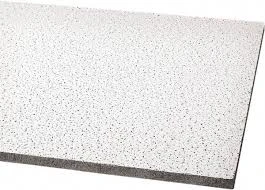Dec . 15, 2024 08:21 Back to list
drywall grid
Understanding Drywall Grid Systems
When it comes to constructing interior walls and ceilings, drywall grid systems play a critical role in providing structure, support, and a finished appearance. A drywall grid, often referred to as a suspended ceiling grid or ceiling grid system, consists of metal framework used to support gypsum board, tiles, or other materials. This article will explore the essential components of drywall grid systems, their installation process, advantages, and considerations.
Components of a Drywall Grid System
A typical drywall grid system is made up of several key elements
1. Main Tees These are the primary support beams that run across the ceiling and are often installed at 4-foot intervals. They provide the main structural framework for the grid.
2. Cross Tees These are shorter pieces that connect to the main tees to create a grid layout. Cross tees can vary in length, typically ranging from 2 feet to 4 feet, depending on the desired configuration.
3. Hangers and Clips Hangers, often made from wire or metal, are used to suspend the main tees from the ceiling joists. Clips or brackets may be necessary to secure components.
4. Edge Trim This is the finishing element that secures the perimeter of the grid system against the wall, providing a clean transition between the wall and the ceiling.
5. Tiles or Panels Once the grid system is installed, it can hold either drywall sheets or ceiling tiles, providing a finished look and adding functionality, such as acoustic properties.
Installation Process
Installing a drywall grid system requires careful planning and execution. Here’s a general overview of the steps involved
1. Planning the Layout Before installation, it is essential to measure the room and plan the grid layout. Marking the desired height for the ceiling and determining the locations for main tees and cross tees will streamline the process.
2. Installing Hangers Once the layout is marked, attach the hangers to the ceiling joists at the marked intervals. The height should be consistent to ensure a level grid.
drywall grid

3. Positioning Main Tees Next, the main tees are inserted into the hangers. Ensure they are level and spaced correctly according to the planned layout.
4. Adding Cross Tees With the main tees in place, the cross tees can be added. Insert them into the slots on the main tees, creating a grid pattern. This network creates the support framework for drywall or tiles.
5. Securing Edge Trim Finally, edge trim is added around the perimeter to encase the grid and ensure a neat finish.
6. Installing Drywall or Tiles Once the grid is installed, drywall sheets or ceiling tiles can be added, completing the ceiling or wall surface.
Advantages of Drywall Grid Systems
There are numerous benefits to using drywall grid systems in construction
- Versatility Grid systems can support a variety of ceiling types and styles, making them suitable for both residential and commercial applications. - Accessibility One of the primary advantages is that it allows easy access to the space above the ceiling. This is beneficial for maintenance of HVAC, electrical work, and plumbing. - Aesthetic Finishes Drywall grid systems can accommodate various finishing options, enhancing the overall appearance of a room and improving acoustics.
Considerations
Before choosing a drywall grid system, there are a few important things to consider
- Weight Ensure that the grid system can adequately support the intended materials, whether drywall or ceiling tiles. - Installation Skill Level While installing a drywall grid system can be a DIY project, obtaining proper guidance or hiring a professional might be necessary for those unfamiliar with construction processes.
- Building Codes Always check local building codes and regulations to ensure compliance.
In conclusion, drywall grid systems are essential components of modern construction that provide structural integrity and aesthetic appeal. With their versatility and ease of access, they are a preferred choice for both professionals and DIY enthusiasts in creating functional and beautiful interior spaces.
-
Durable Ceiling T Grid Systems | Easy InstallationNewsAug.29,2025
-
PVC Gypsum Ceiling: Durable, Laminated Tiles for Modern SpacesNewsAug.28,2025
-
Pvc Gypsum Ceiling Is DurableNewsAug.21,2025
-
Mineral Fiber Board Is DurableNewsAug.21,2025
-
Ceiling Tile Clip Reusable DesignNewsAug.21,2025
-
Ceiling T Grid Modular DesignNewsAug.21,2025







